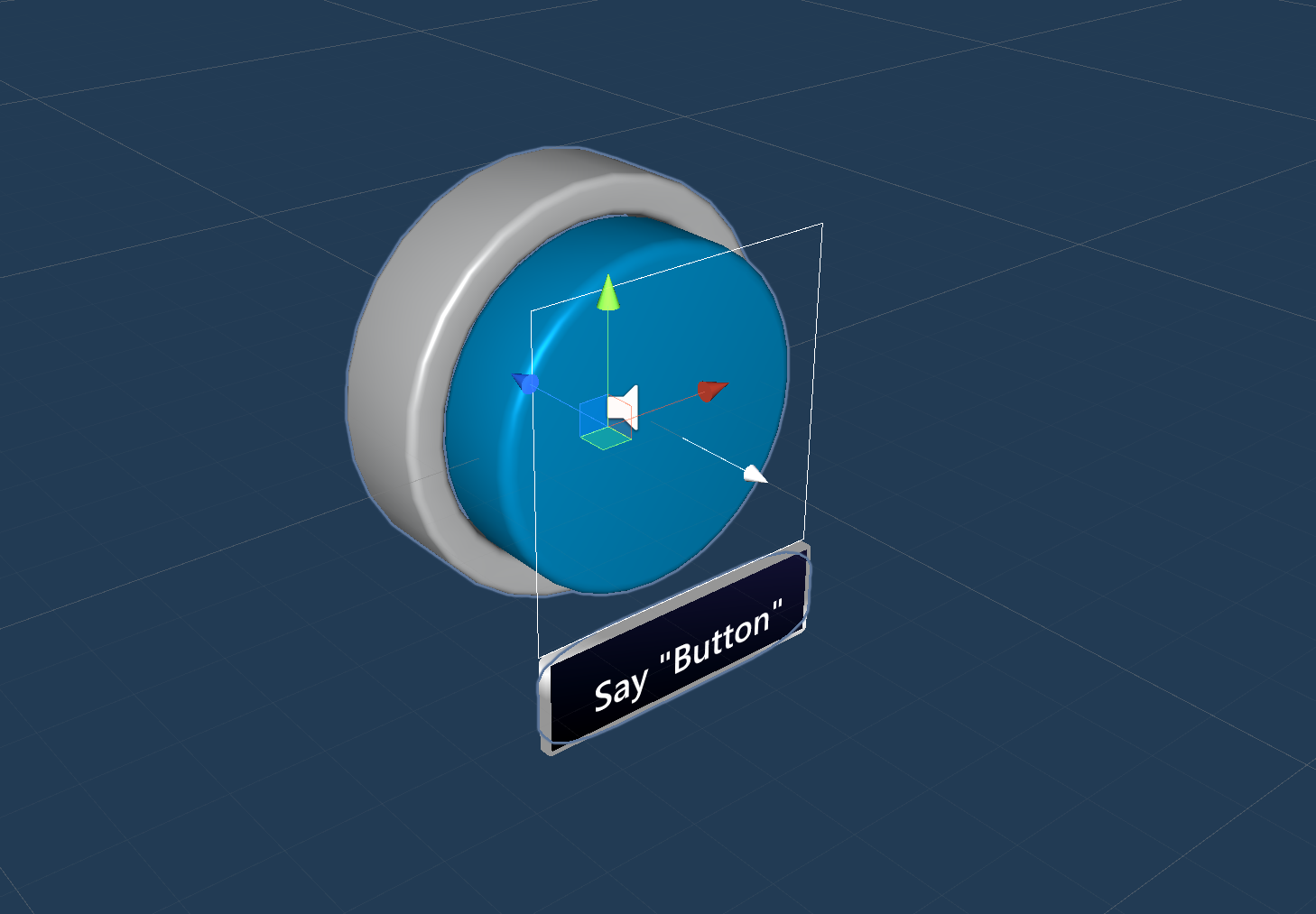Button
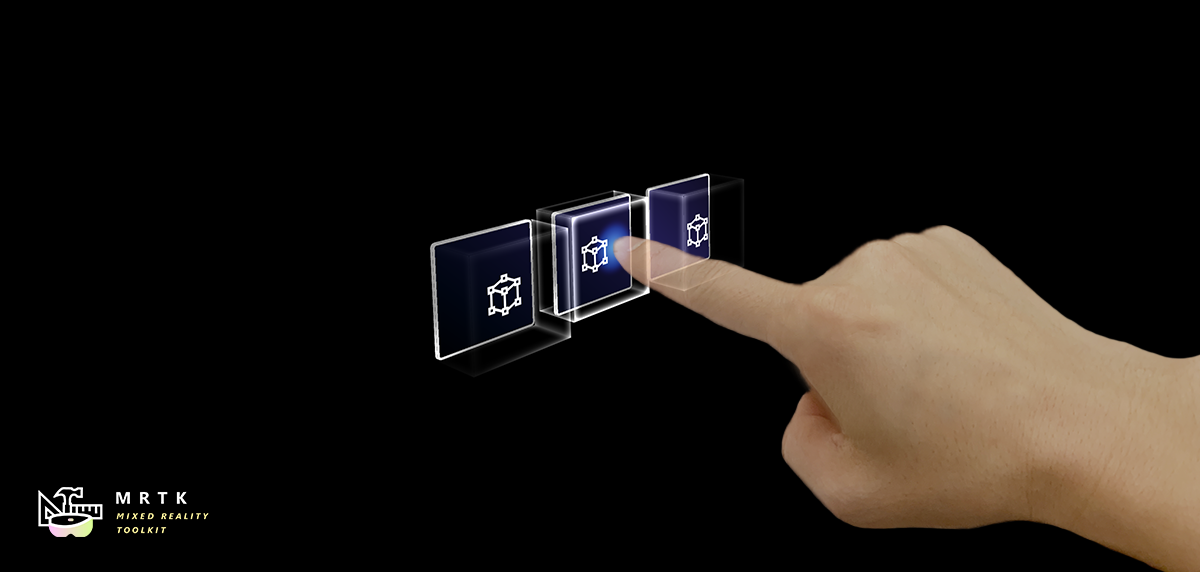
A button gives the user a way to trigger an immediate action. It is one of the most foundational components in mixed reality. MRTK provides various types of button prefabs.
Button prefabs in MRTK
Examples of the button prefabs under MixedRealityToolkit.SDK/Features/UX/Interactable/Prefabs folder
Unity UI Image/Graphic based buttons
UnityUIInteractableButton.prefabPressableButtonUnityUI.prefabPressableButtonUnityUICircular.prefabPressableButtonHoloLens2UnityUI.prefab
Collider based buttons
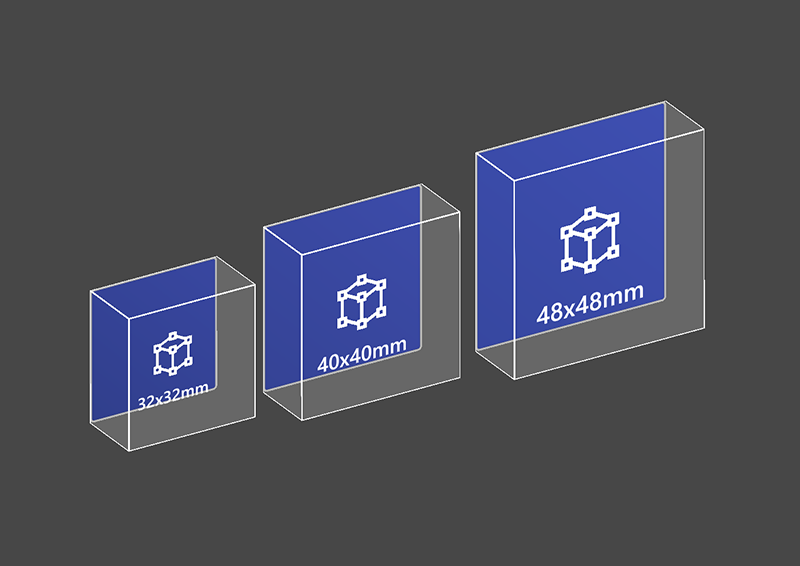 PressableButtonHoloLens2 PressableButtonHoloLens2 |
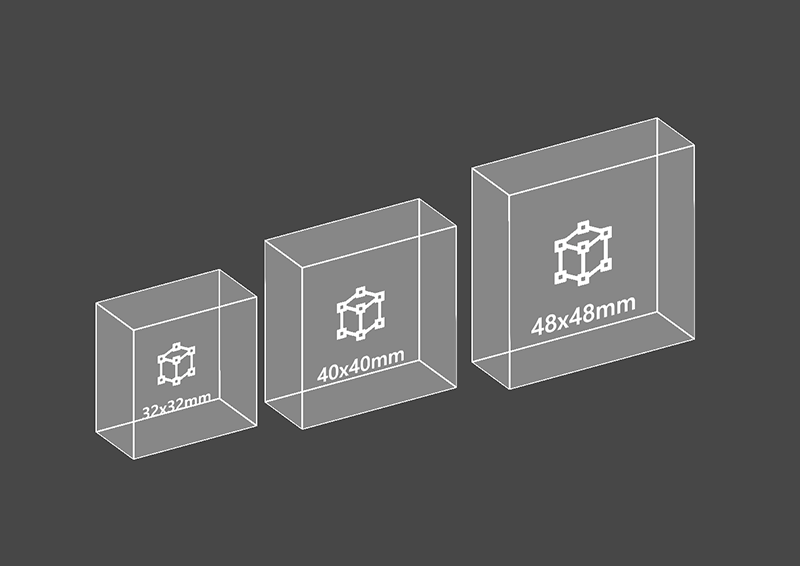 PressableButtonHoloLens2Unplated PressableButtonHoloLens2Unplated |
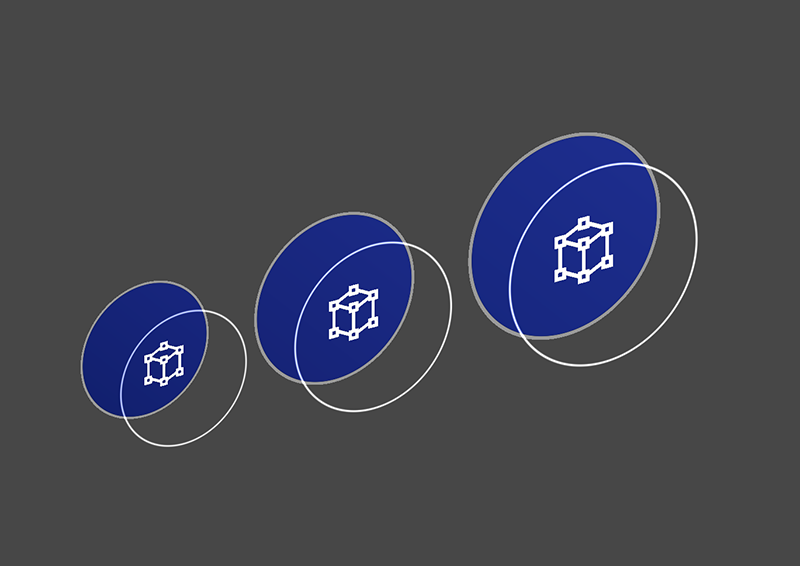 PressableButtonHoloLens2Circular PressableButtonHoloLens2Circular |
|---|---|---|
| HoloLens 2's shell-style button with backplate which supports various visual feedback such as border light, proximity light, and compressed front plate | HoloLens 2's shell-style button without backplate | HoloLens 2's shell-style button with circular shape |
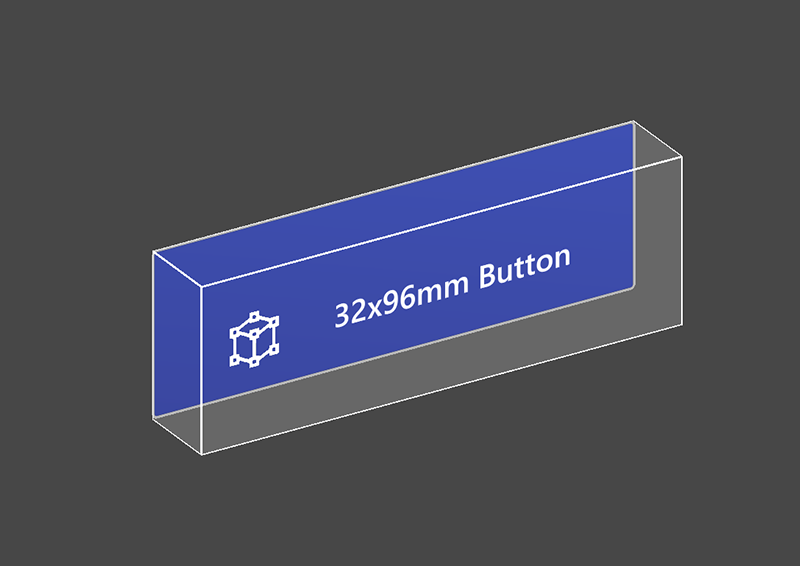 PressableButtonHoloLens2_32x96 PressableButtonHoloLens2_32x96 |
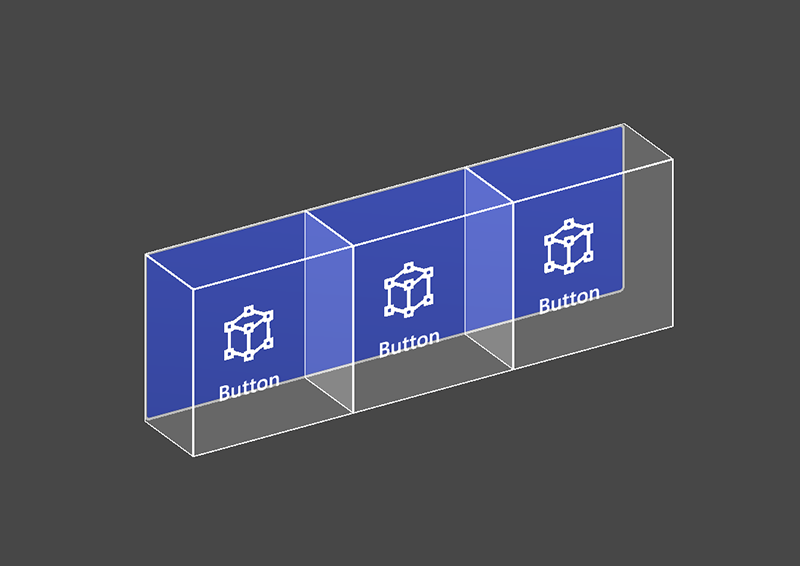 PressableButtonHoloLens2Bar3H PressableButtonHoloLens2Bar3H |
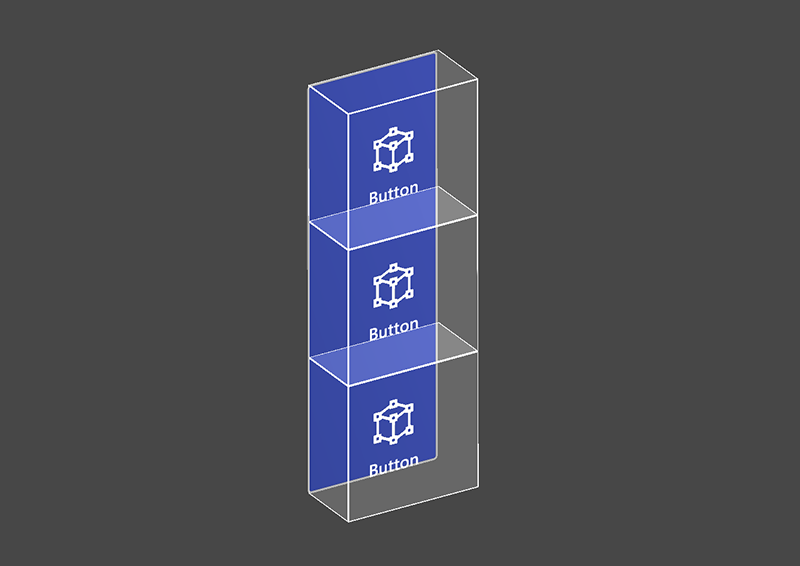 PressableButtonHoloLens2Bar3V PressableButtonHoloLens2Bar3V |
| Wide HoloLens 2's shell-style button 32x96mm | Horizontal HoloLens 2 button bar with shared backplate | Vertical HoloLens 2 button bar with shared backplate |
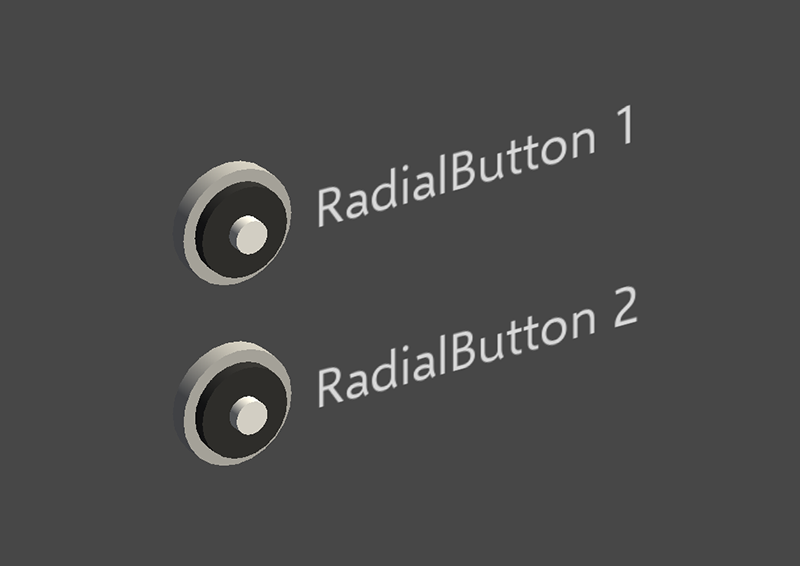 Radial Radial |
 Checkbox Checkbox |
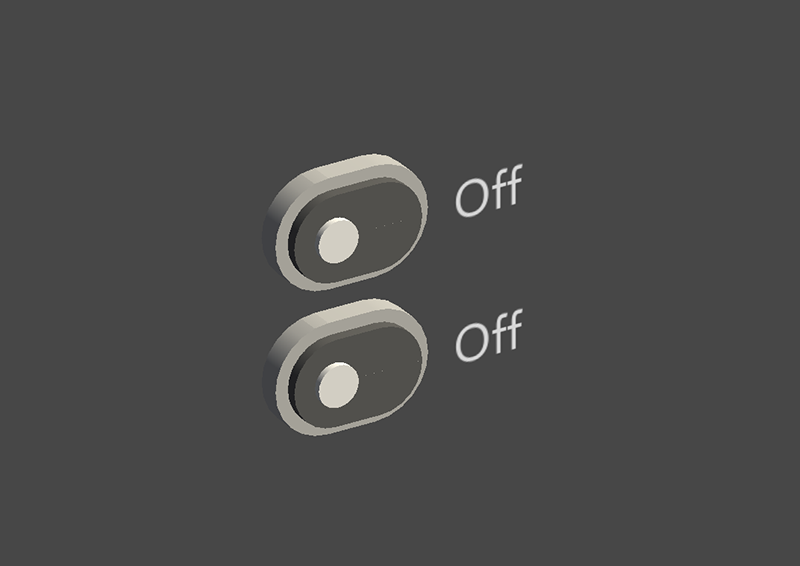 ToggleSwitch ToggleSwitch |
| Radial button | Checkbox | Toggle switch |
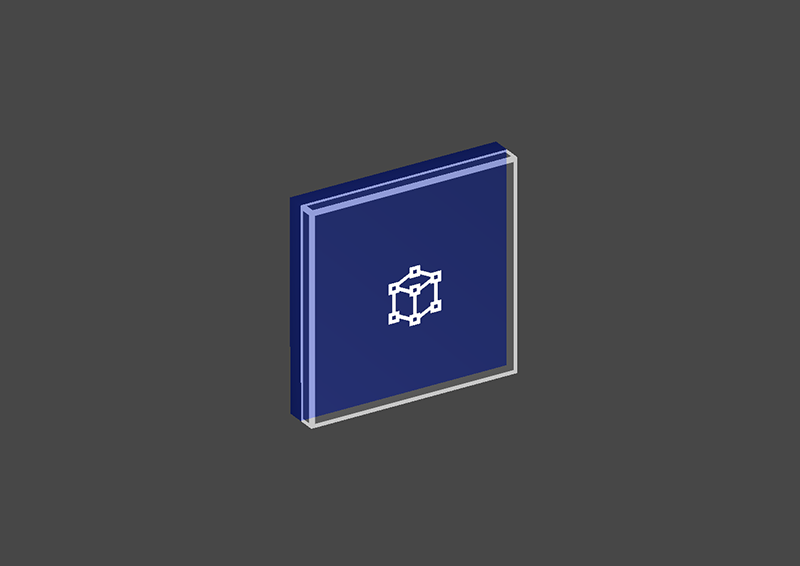 ButtonHoloLens1 ButtonHoloLens1 |
 PressableRoundButton PressableRoundButton |
 Button Button |
| HoloLens 1st gen's shell style button | Round shape push button | Basic button |
The Button.prefab is based on the Interactable concept to provide easy UI controls for buttons or other types of interactive surfaces. The baseline button supports all available input methods, including articulated hand input for the near interactions as well as gaze + air-tap for the far interactions. You can also use voice command to trigger the button.
PressableButtonHoloLens2.prefab is HoloLens 2's shell style button that supports the precise movement of the button for the direct hand tracking input. It combines Interactable script with PressableButton script.
How to use pressable buttons
Unity UI based buttons
Create a Canvas in your scene (GameObject -> UI -> Canvas). In the Inspector panel for your Canvas:
- Click "Convert to MRTK Canvas"
- Click "Add NearInteractionTouchableUnityUI"
- Set the Rect Transform component's X, Y, and Z scale to 0.001
Then, drag PressableButtonUnityUI.prefab, PressableButtonUnityUICircular.prefab, or PressableButtonHoloLens2UnityUI.prefab onto the Canvas.
Collider based buttons
Simply drag PressableButtonHoloLens2.prefab or PressableButtonHoloLens2Unplated.prefab into the scene. These button prefabs are already configured to have audio-visual feedback for the various types of inputs, including articulated hand input and gaze.
The events exposed in the prefab itself as well as the Interactable component can be used to trigger additional actions. The pressable buttons in the HandInteractionExample scene use Interactable's OnClick event to trigger a change in the color of a cube. This event gets triggered for different types of input methods such as gaze, air-tap, hand-ray, as well as physical button presses through the pressable button script.
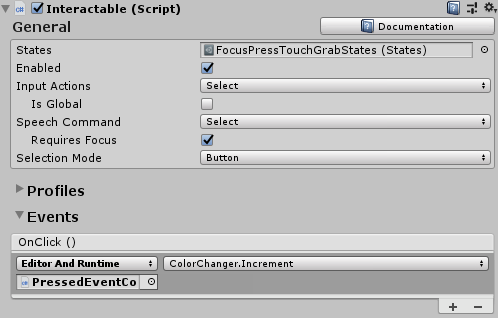
You can configure when the pressable button fires the OnClick event via the PhysicalPressEventRouter on the button. For example, you can set OnClick to fire when the button is first pressed, as opposed to be pressed and released, by setting Interactable On Click to Event On Press.

To leverage specific articulated hand input state information, you can use pressable buttons events - Touch Begin, Touch End, Button Pressed, Button Released. These events will not fire in response to air-tap, hand-ray, or eye inputs, however.
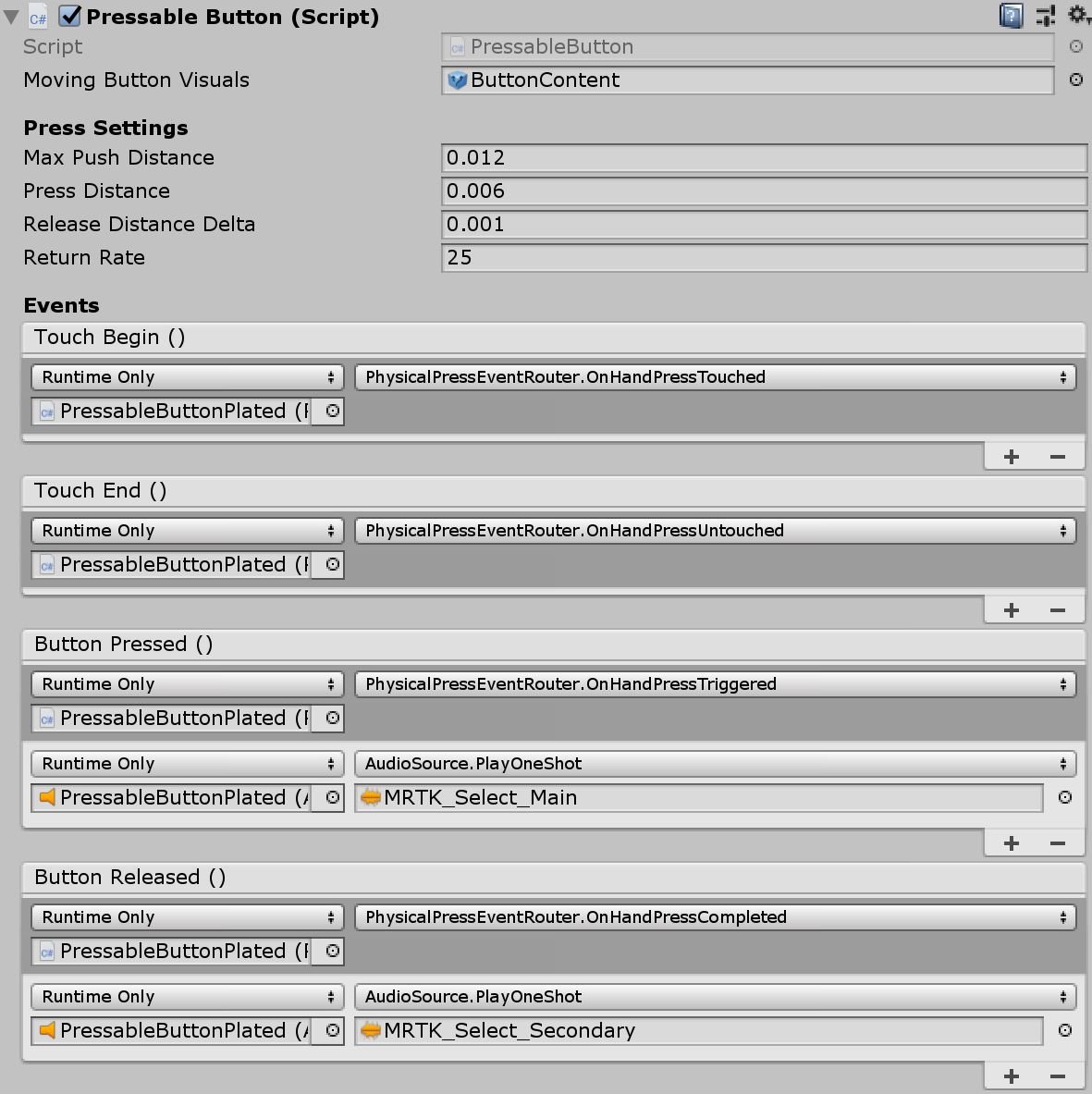
Interaction States
In the idle state, the button's front plate is not visible. As a finger approaches or a cursor from gaze input targets the surface, the front plate's glowing border becomes visible. There is additional highlighting of the fingertip position on the front plate surface. When pushed with a finger, the front plate moves with the fingertip. When the fingertip touches the surface of the front plate, it shows a subtle pulse effect to give visual feedback of the touch point.
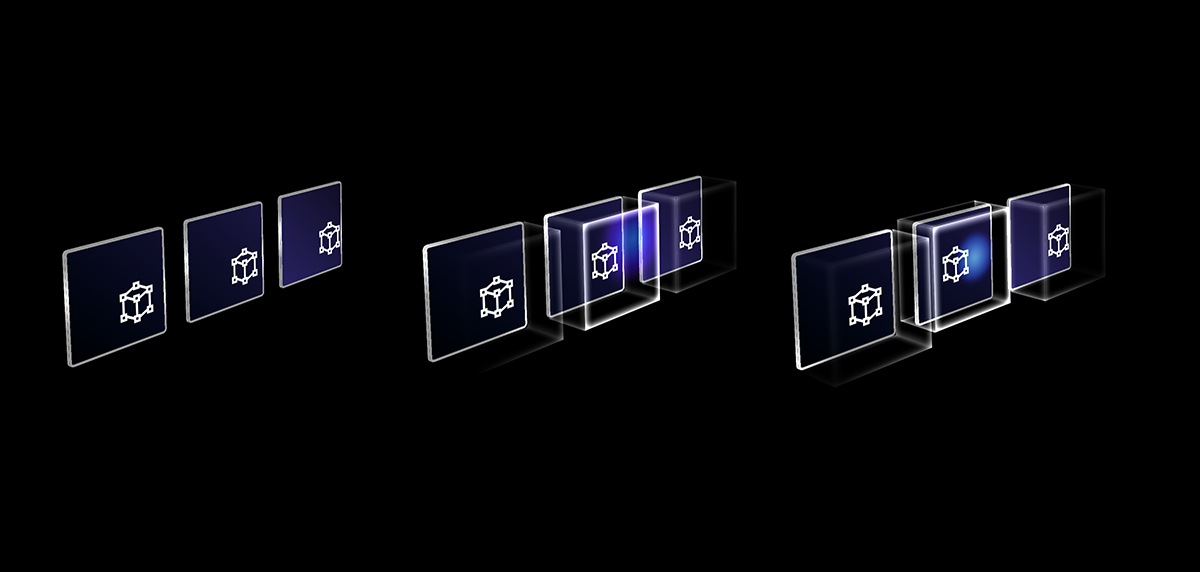
The subtle pulse effect is triggered by the pressable button, which looks for ProximityLight(s) that live on the currently interacting pointer. If any proximity lights are found, the ProximityLight.Pulse method is called, which automatically animates shader parameters to display a pulse.
Inspector properties

Box Collider
Box Collider for the button's front plate.
Pressable Button The logic for the button movement with hand press interaction.
Physical Press Event Router This script sends events from hand press interaction to Interactable.
Interactable Interactable handles various types of interaction states and events. HoloLens gaze, gesture, and voice input and immersive headset motion controller input are directly handled by this script.
Audio Source Unity audio source for the audio feedback clips.
NearInteractionTouchable.cs Required to make any object touchable with articulated hand input.
Prefab Layout
The ButtonContent object contains front plate, text label and icon. The FrontPlate responds to the proximity of the index fingertip using the Button_Box shader. It shows glowing borders, proximity light, and a pulse effect on touch. The text label is made with TextMesh Pro. SeeItSayItLabel's visibility is controlled by Interactable's theme.
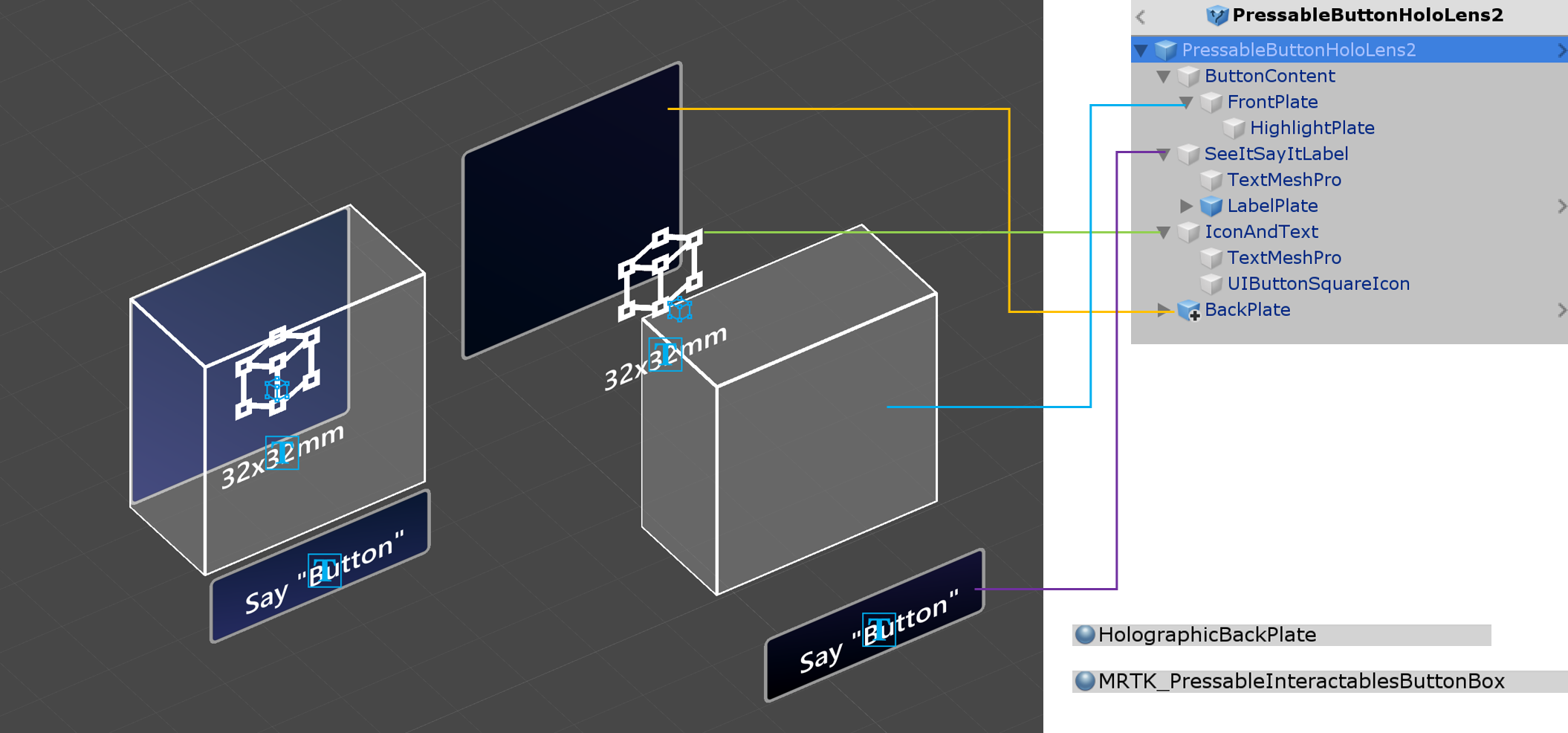
How to change the icon and text
To change the text of the button, update the Text component of the TextMeshPro object under IconAndText. Changing the icon can be done by replacing the material that is assigned to UIButtonSquareIcon object. By default, HolographicButtonIconFontMaterial is assigned.
To create a new icon material, duplicate one of the existing icon materials. These can be found under MixedRealityToolkit.SDK/Features/UX/Interactable/Materials folder.
Create a new PNG texture and import into Unity. Use existing icon PNG file examples as reference. MixedRealityToolkit.SDK/Features/UX/Interactable/Textures
Drag and drop newly created PNG texture onto the Albedo property in the material.
Assgin the material to the UIButtonSquareIcon object.
Voice command ('See-it, Say-it')
Speech Input Handler
The Interactable script in Pressable Button already implements IMixedRealitySpeechHandler. A voice command keyword can be set here.
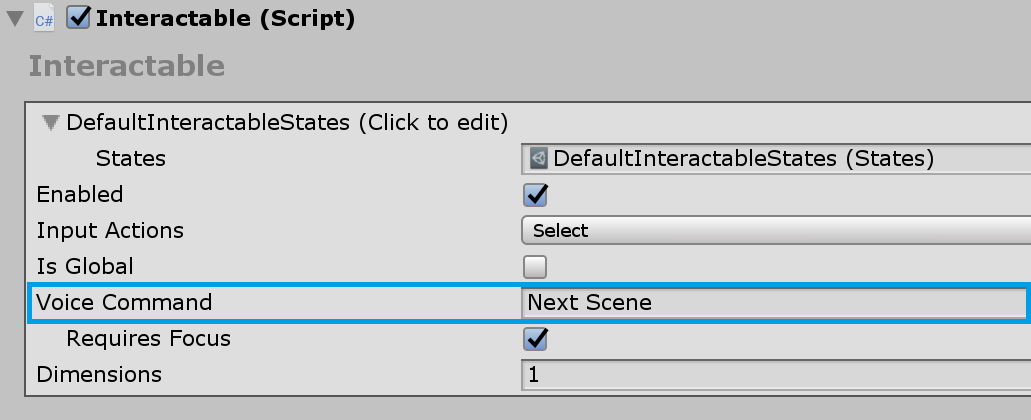
Speech Input Profile Additionally, you need to register the voice command keyword in the global Speech Commands Profile.
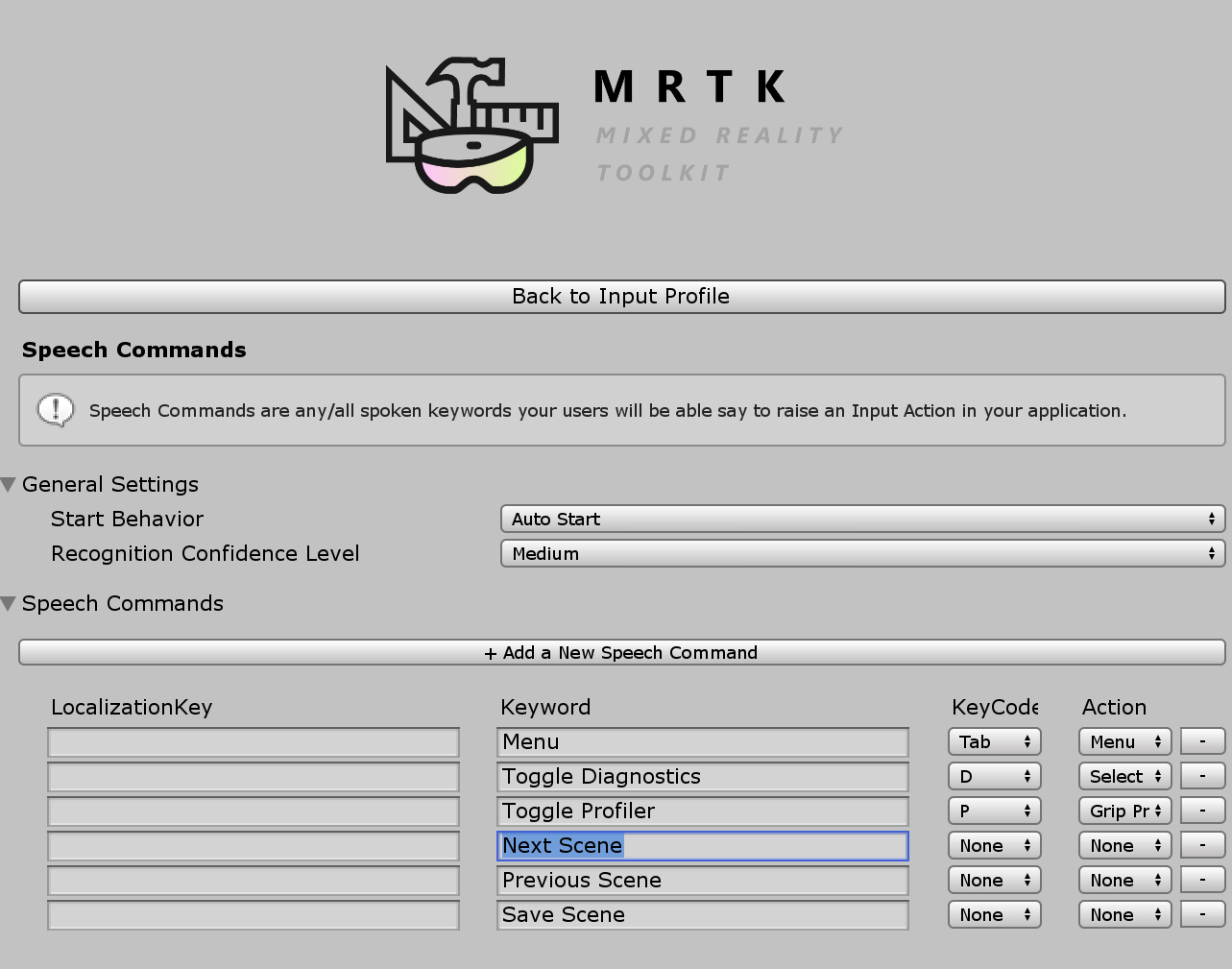
See-it, Say-it label The pressable button prefab has a placeholder TextMesh Pro label under the SeeItSayItLabel object. You can use this label to communicate the voice command keyword for the button to the user.
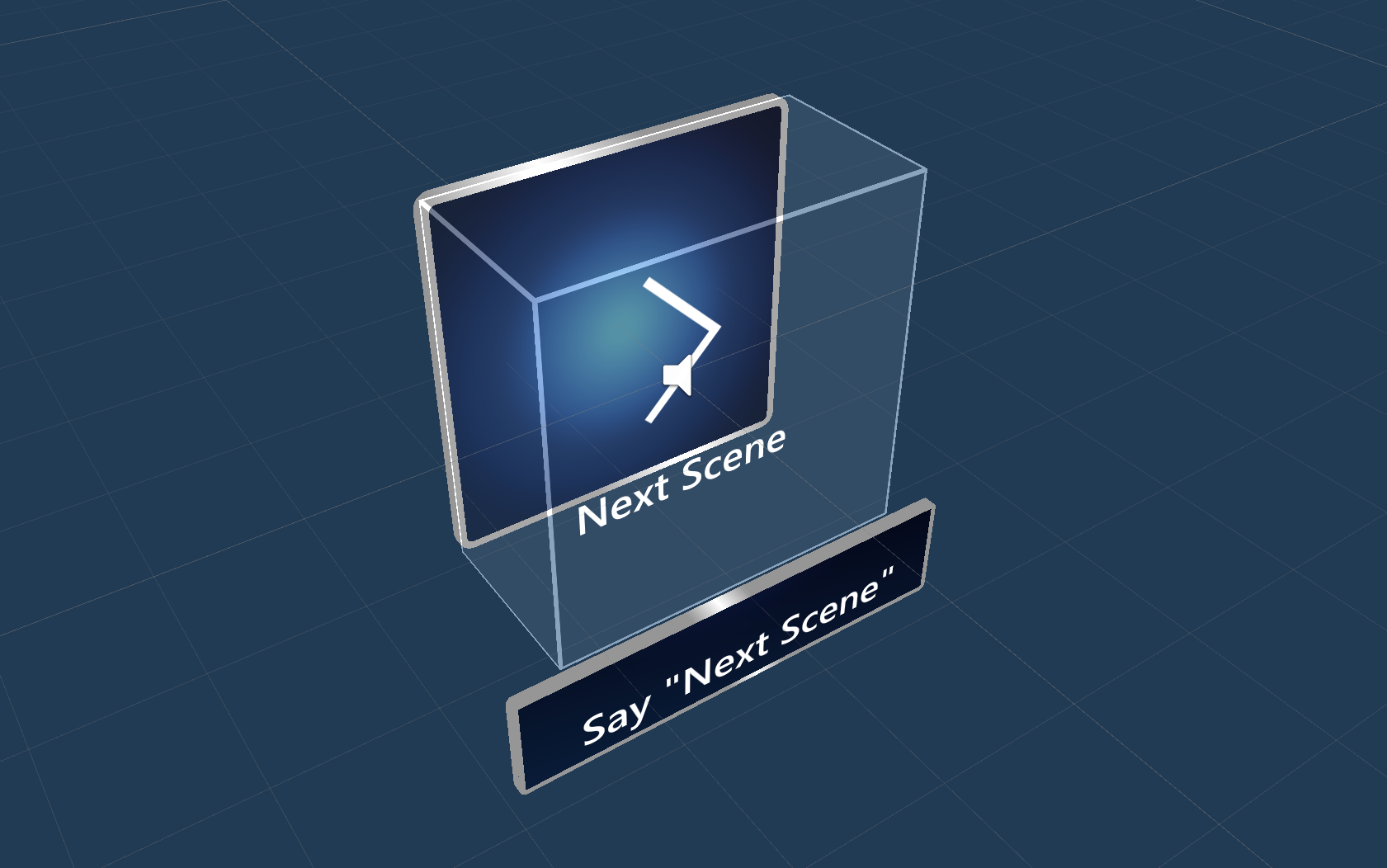
How to make a button from scratch
You can find the examples of these buttons in the PressableButtonExample scene.
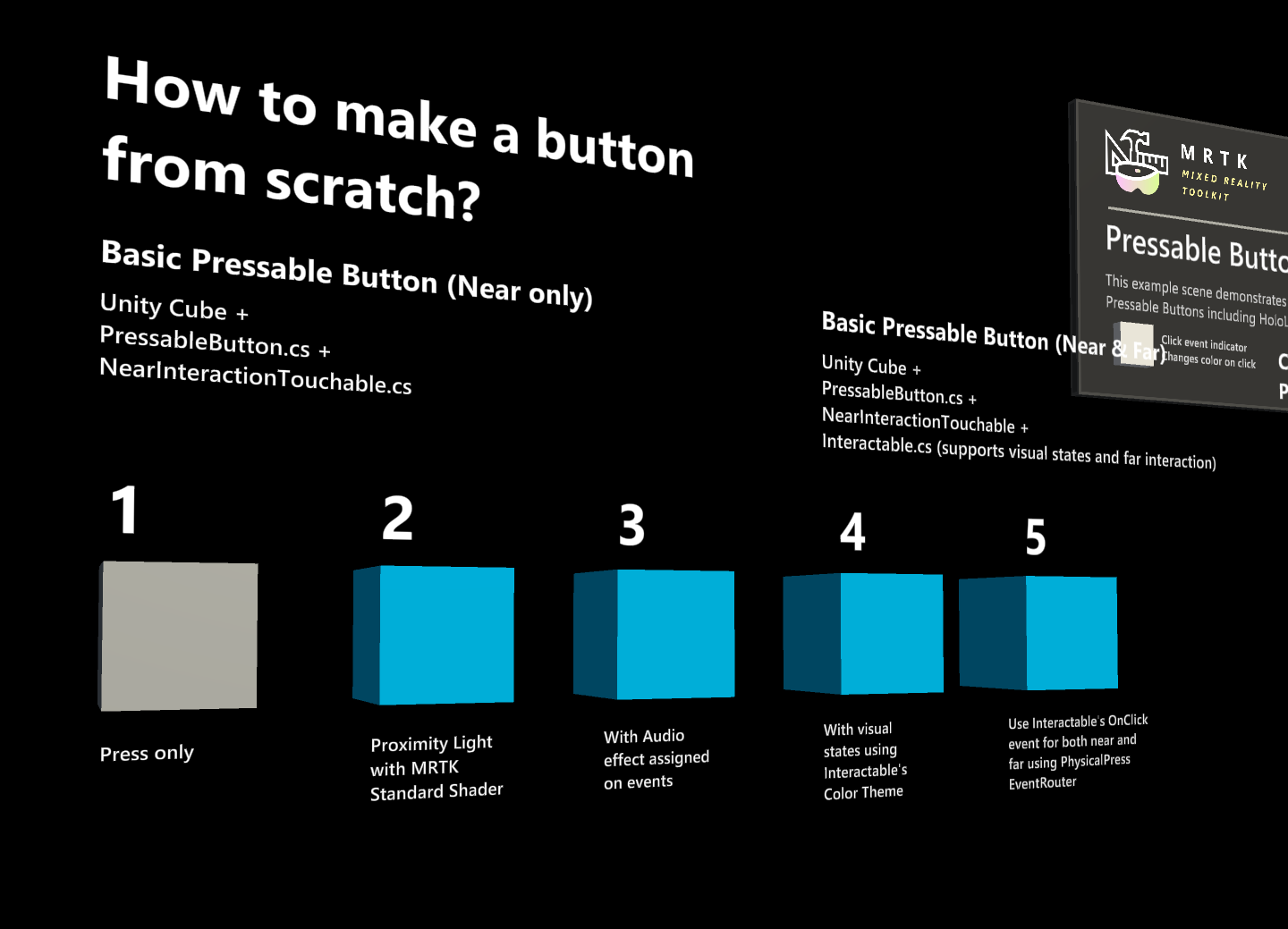
1. Creating a Pressable Button with Cube (Near interaction only)
- Create a Unity Cube (GameObject > 3D Object > Cube)
- Add
PressableButton.csscript - Add
NearInteractionTouchable.csscript
In the PressableButton's Inspector panel, assign the cube object to the Moving Button Visuals.

When you select the cube, you will see multiple colored layers on the object. This visualizes the distance values under Press Settings. Using the handles, you can configure when to start press (move the object) and when to trigger event.
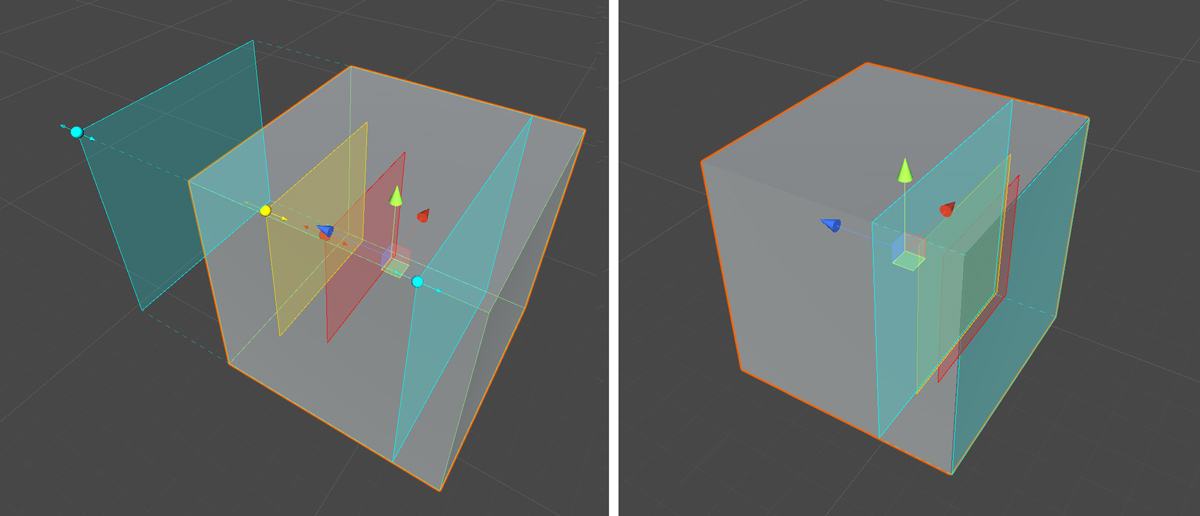
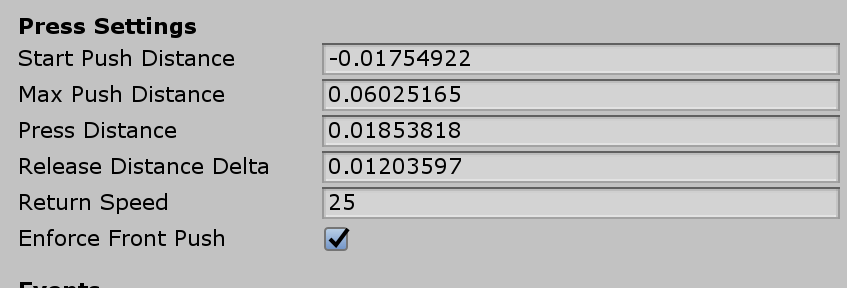
When you press the button, it will move and generate proper events exposed in the PressableButton.cs script such as TouchBegin(), TouchEnd(), ButtonPressed(), ButtonReleased().
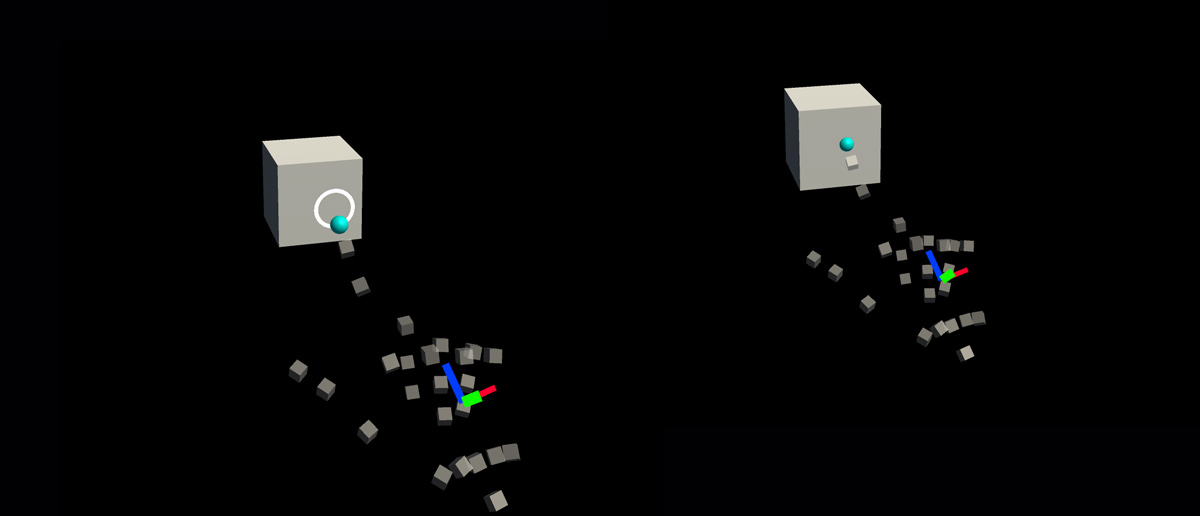
2. Adding visual feedback to the basic cube button
MRTK Standard Shader provides various features that makes it easy to add visual feedback. Create an material and select shader Mixed Reality Toolkit/Standard. Or you can use or duplicate one of the existing materials under /SDK/StandardAssets/Materials/ that uses MRTK Standard Shader.
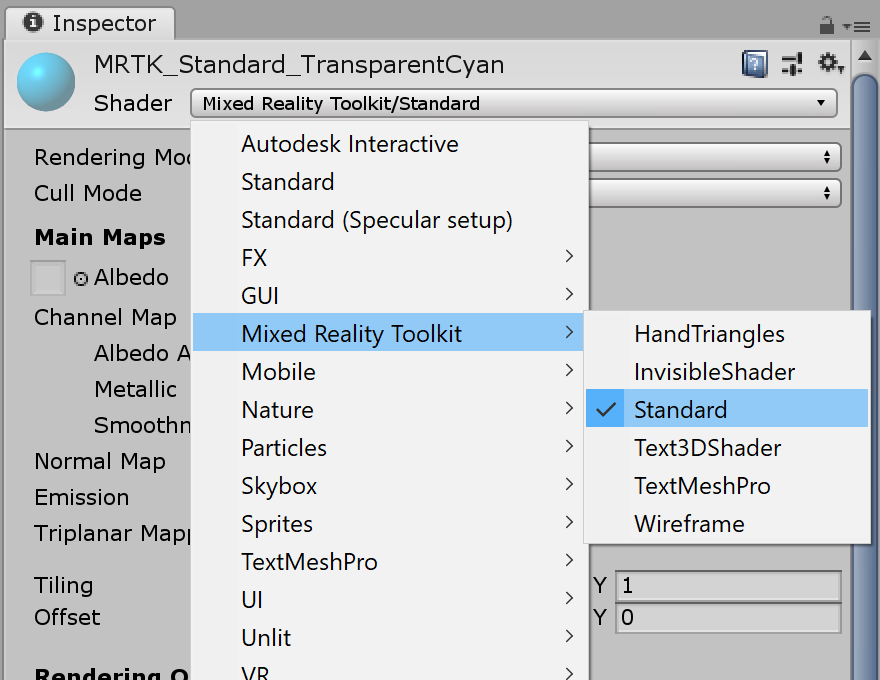
Check Hover Light and Proximity Light under Fluent Options. This enables visual feedback for both near hand(Proximity Light) and far pointer(Hover Light) interactions.
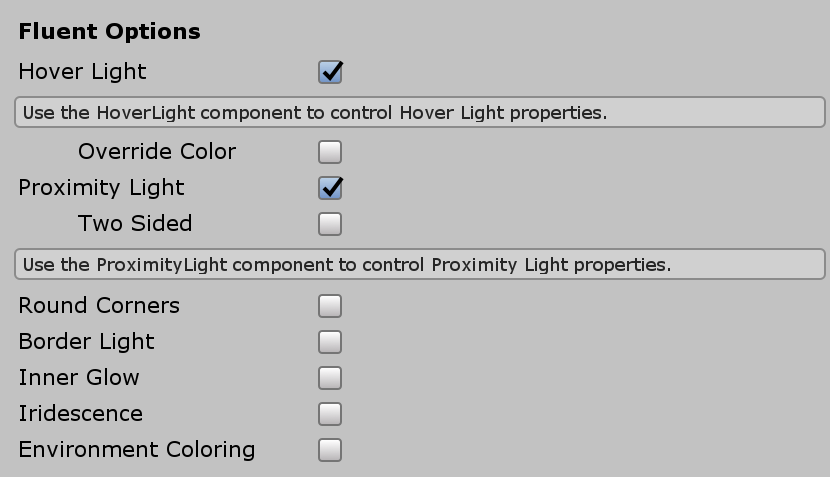
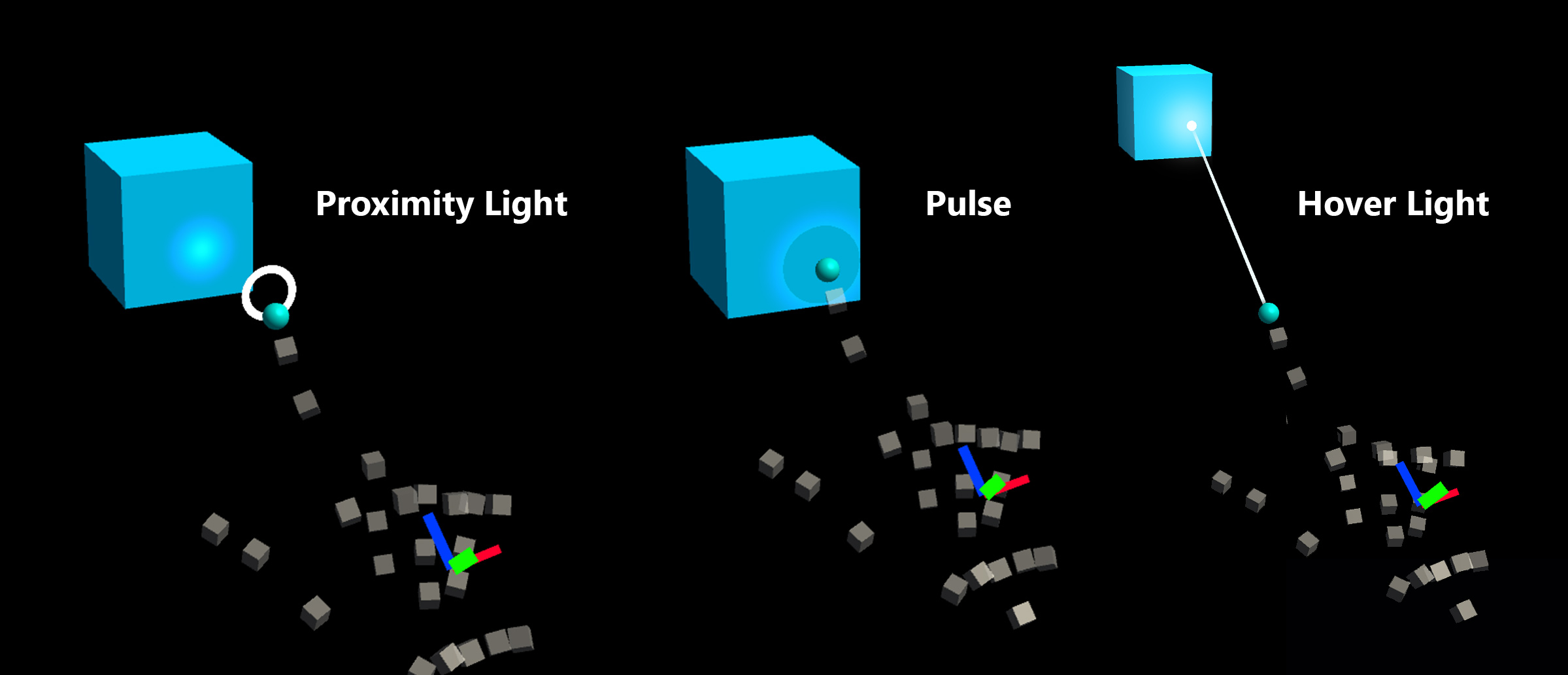
3. Adding audio feedback to the basic cube button
Since PressableButton.cs script exposes events such as TouchBegin(), TouchEnd(), ButtonPressed(), ButtonReleased(), we can easily assign audio feedback. Simply add Unity's Audio Source to the cube object then assign audio clips by selecting AudioSource.PlayOneShot(). You can use MRTK_Select_Main and MRTK_Select_Secondary audio clips under /SDK/StandardAssets/Audio/ folder.
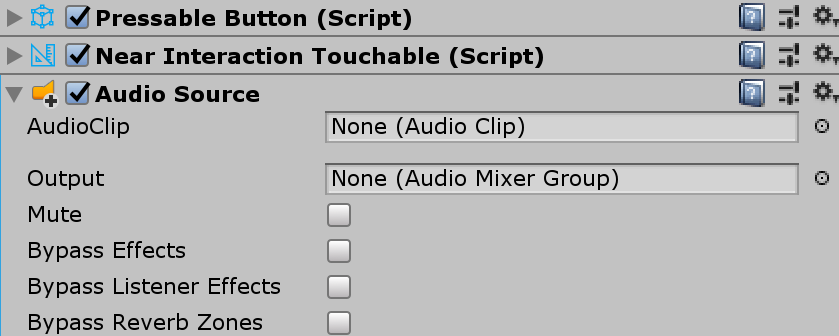
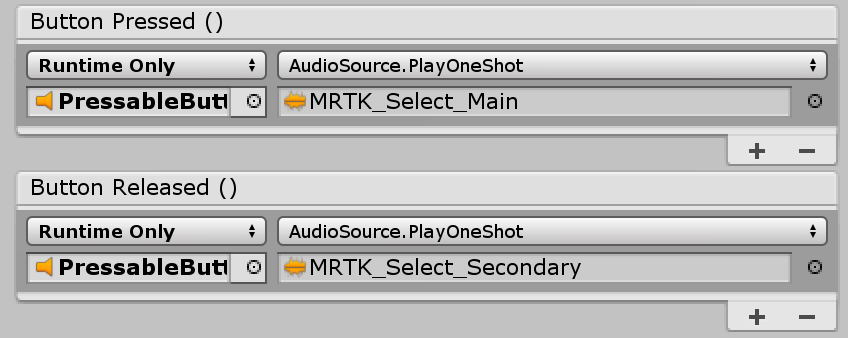
4. Adding visual states and handle far interaction events
Interactable is a script that makes it easy to create a visual states for the various types of input interactions. It also handles far interaction events. Add Interactable.cs and drag and drop the cube object onto the Target field under Profiles. Then, create a new Theme with a type ScaleOffsetColorTheme. Under this theme, you can specify the color of the object for the specific interaction states such as Focus and Pressed. You can also control Scale and Offset as well. Check Easing and set duration to make the visual transition smooth.
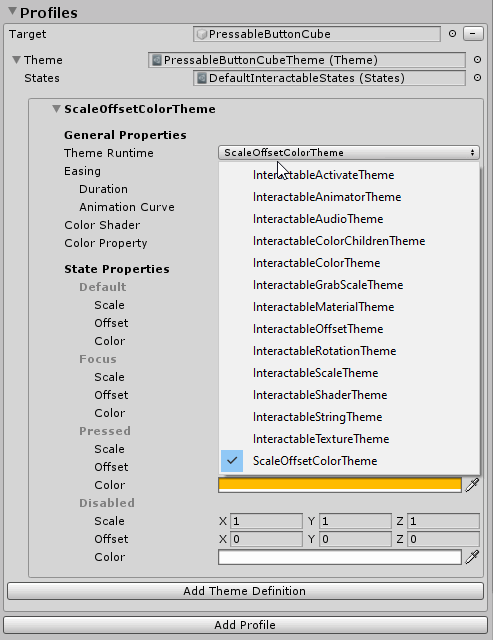
You will see the object responds to both far(hand ray or gaze cursor) and near(hand) interactions.
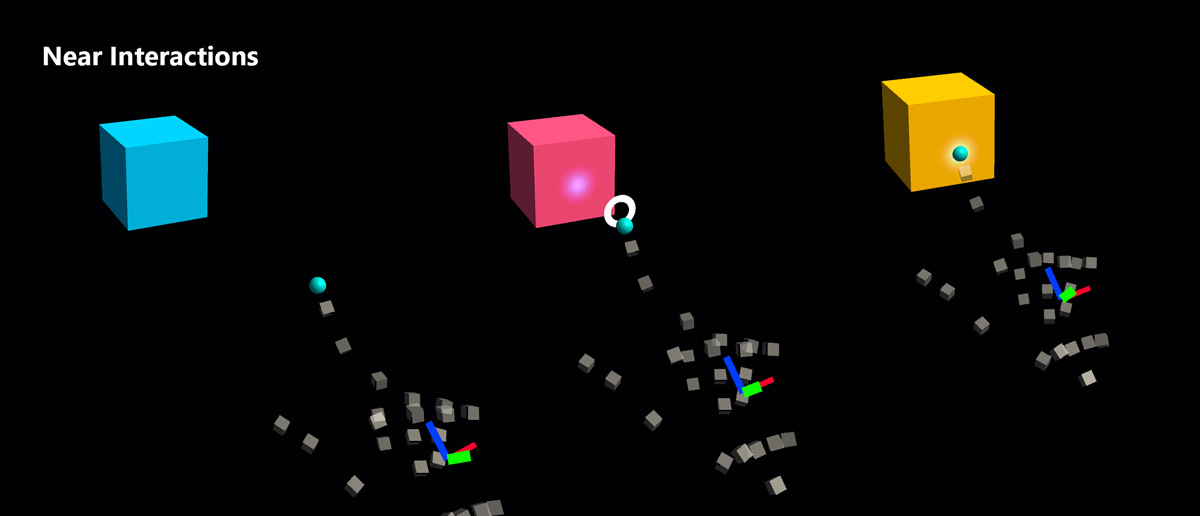
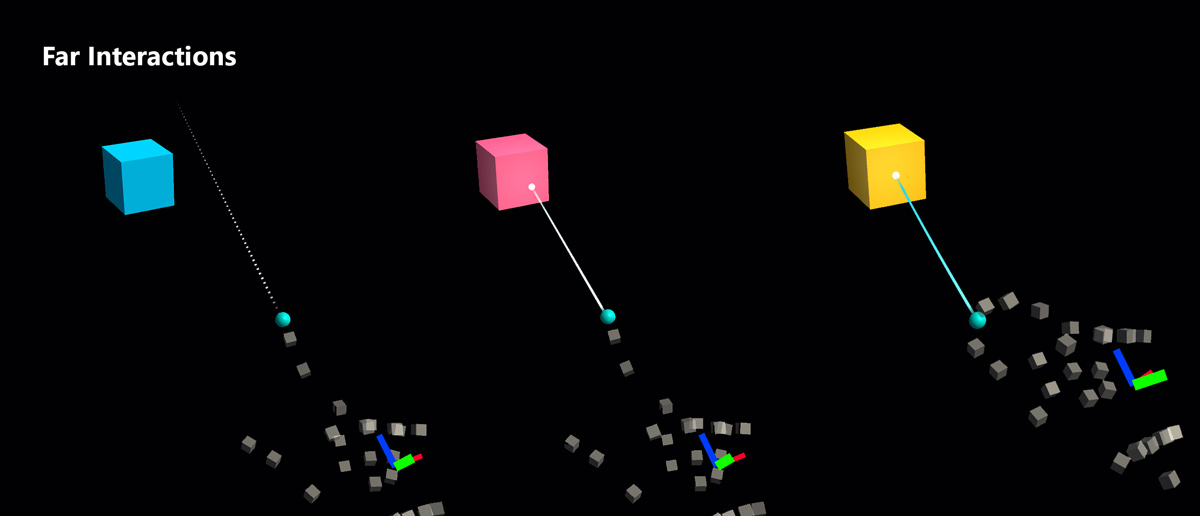
Custom Button Examples
In the HandInteractionExample scene, you can take a look at the piano and round button examples which are both using PressableButton.
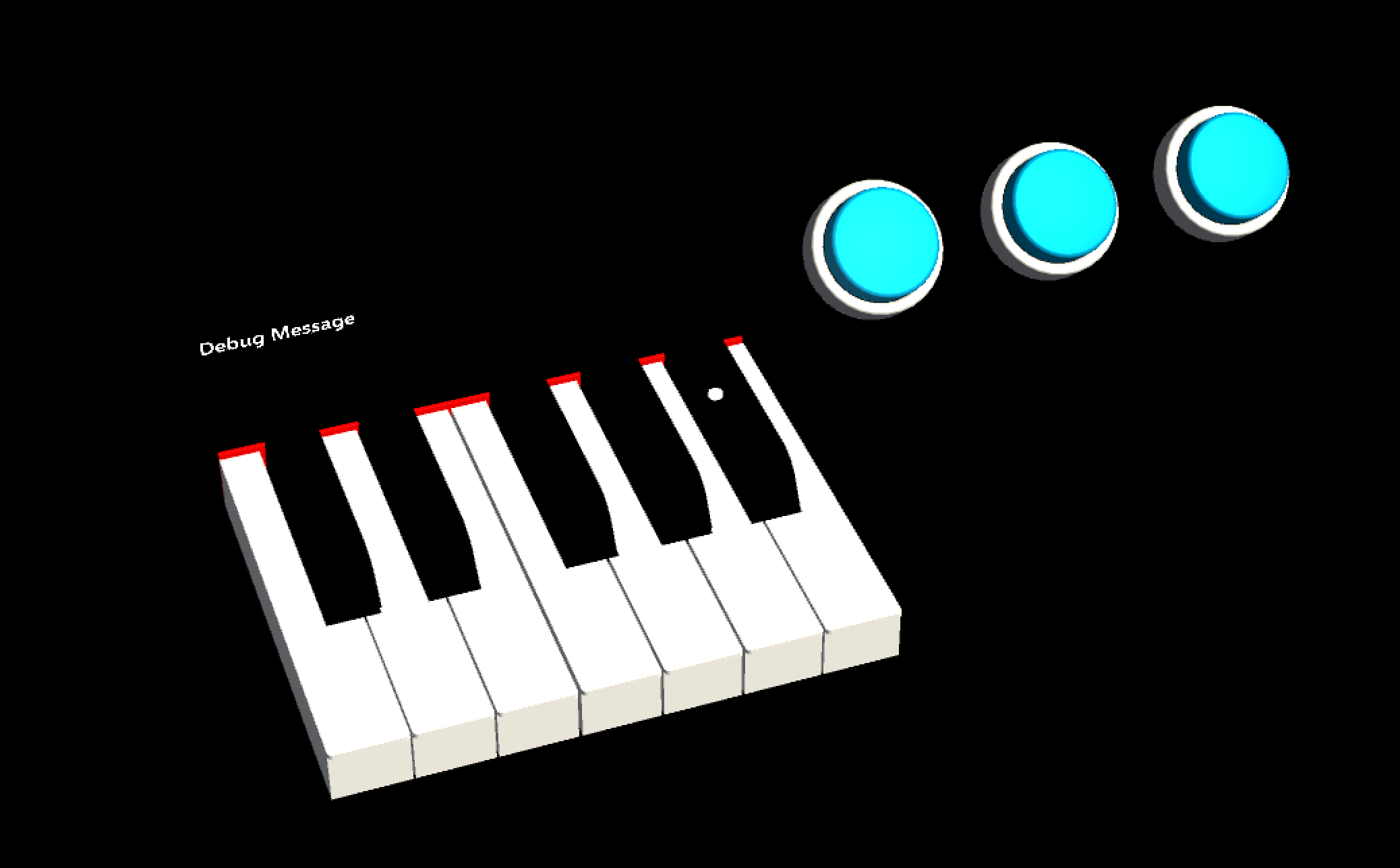
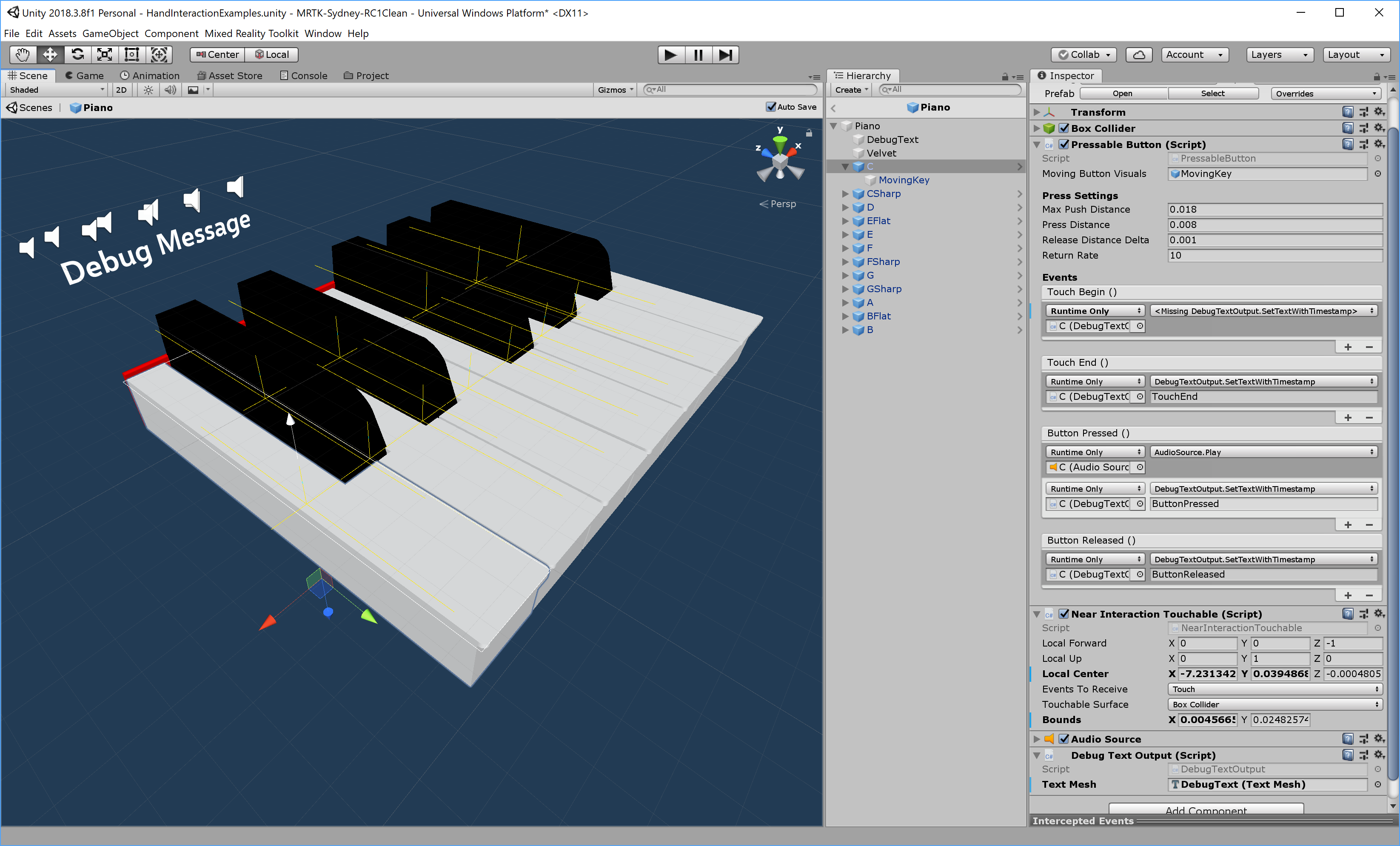
Each piano key has a PressableButton and a NearInteractionTouchable script assigned. It is important to verify that the Local Forward direction of NearInteractionTouchable is correct. It is represented by a white arrow in the editor. Make sure the arrow points away from the button's front face:
